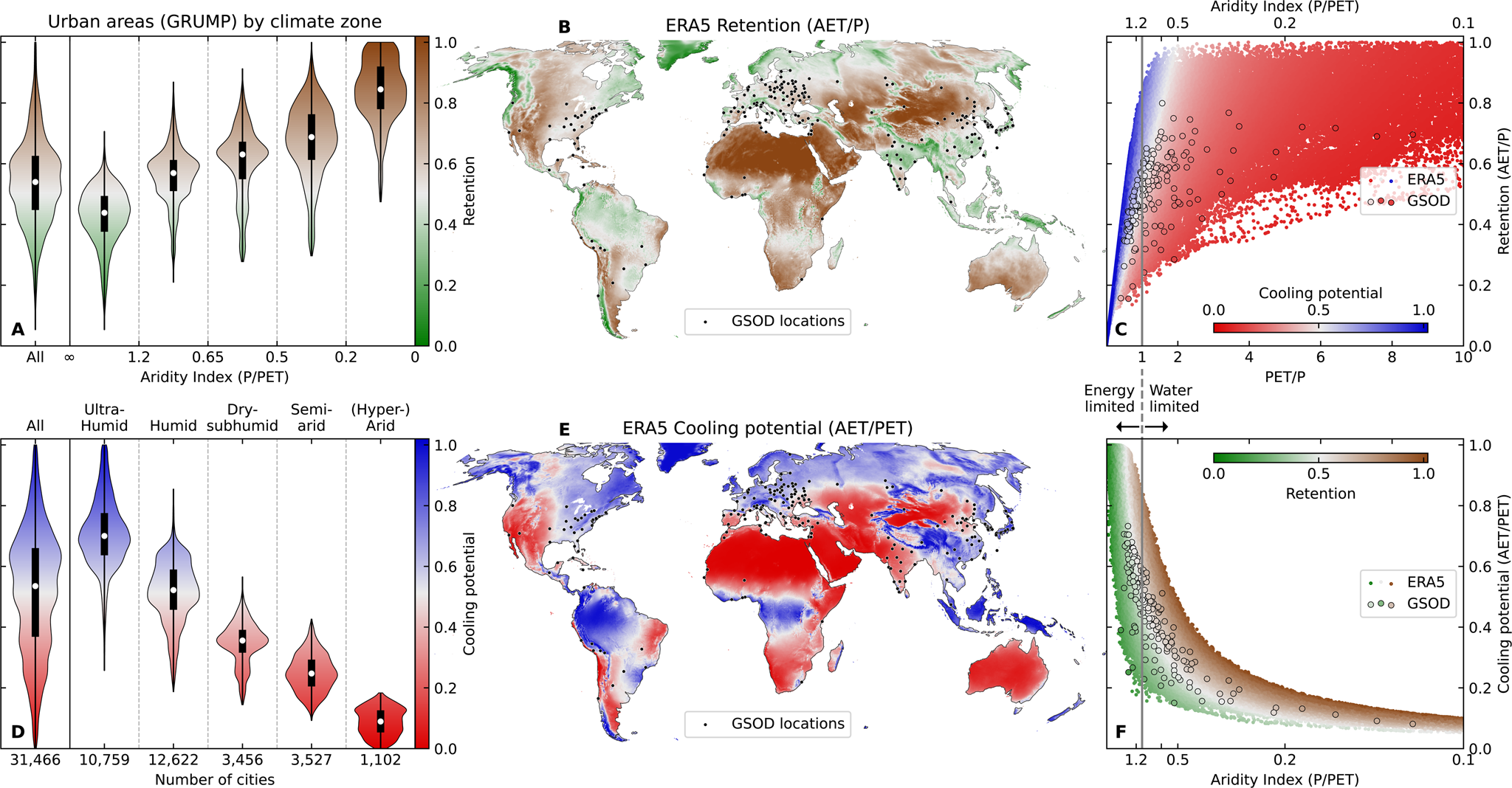2022-01-26 カーディフ大学
・都市部の緑地が洪水を軽減するかどうかは、その都市の気候に大きく依存し、乾燥した環境では洪水防止効果が高く、湿度の高い気候では冷却効果が高いことを明らかにした。
・都市における熱波は、熱を吸収・保持するコンクリートや鉄が多く、植物から蒸発する水による冷却が行われないために起こる都市型ヒートアイランド現象(UHI)が原因とされており、洪水は、都市の構造物やシステムが雨水の自然な流出に悪影響を及ぼす。
・一般的に提案されている戦略は、屋上緑化や植生のある都市空間または公園の形で私たちの都市に都市緑化を実施することで、都市ヒートアイランド効果(UHI)と都市河川症候群(USS)の影響を減らすだけでなく、地元の野生生物を支援し、汚染を減らし、地元住民の一般的な幸福を改善することを目指している。
・この研究では、地球規模の気候モデルの出力と、2000年から2015年までの15年間にわたる世界175都市の日々の観測による気象情報を用い、データと土壌科学から取り入れた理論とを組み合わせて、スポンジのように作用して雨水の流出を抑える土壌への水の浸透と、望ましい冷却効果を誘発する植物からの水分の蒸発を計算した。
・カーディフ大学地球環境科学部のマーク・カスバート博士は、「地域や地方の気候条件は、都市の土壌や植物が洪水と猛暑から同時に身を守る能力に大きく影響します。我々の研究では、世界の多くの都市で、都市緑化が冷房と洪水を同時に緩和することができないことを示しています。」
・また、気候変動による降雨パターンの変動が大きくなると、土壌や根系が厚い大規模な緑化地域と比較して、屋上緑化などの薄い緑化構造の性能をより早く低下させる可能性があることを明らかにした。
・個々の都市にとって最適な解決策を見出すために、性能、コスト、実行可能性の間でバランスを取りながら検討する必要がある。「都市緑化は万能ではないかもしれませんが、未来の都市をデザインする上で何が可能かを示しています」と、カスバート博士。
<関連情報>

都市緑化の保水効果と冷却効果の地球規模の気候によるトレードオフ Global climate-driven trade-offs between the water retention and cooling benefits of urban greening
M. O. Cuthbert,G. C. Rau,M. Ekström,D. M. O’Carroll & A. J. Bates
Nature Communications volume 13, Article number: 518 (2022)
Abstract
Urban greening can potentially help mitigate heat-related mortality and flooding facing the >4 billion urban population worldwide. However, the geographical variation of the relative combined hydrological and thermal performance benefits of such interventions are unknown. Here we quantify globally, using a hydrological model, how climate-driven trade-offs exist between hydrological retention and cooling potential of urban greening such as green roofs and parks. Using a Budyko framework, we show that water retention generally increases with aridity in water-limited environments, while cooling potential favors energy-limited climates. Our models suggest that common urban greening strategies cannot yield high performance simultaneously for addressing both urban heat-island and urban flooding problems in most cities globally. Irrigation, if sustainable, may enhance cooling while maintaining retention performance in more arid locations. Increased precipitation variability with climate change may reduce performance of thinner green-infrastructure more quickly compared to greened areas with thicker soils and root systems. Our results provide a conceptual framework and first-order quantitative guide for urban development, renewal and policymaking.
Fig. 1: Global patterns of urban greening hydrological retention and cooling potential.

Spatial distributions and interrelationships of ERA5 re-analysis data forced models using intensive substrate (h = 150 mm) for: (B, C) Retention and (E, F) Cooling potential. (A, D) Violin plots for data extracted from GRUMP18 urban areas only. GSOD19 city point-data and locations are shown for reference in (B, C) and (E, F). Equivalent results for other substrates are given in Supplementary Figs. 6 and 7.



